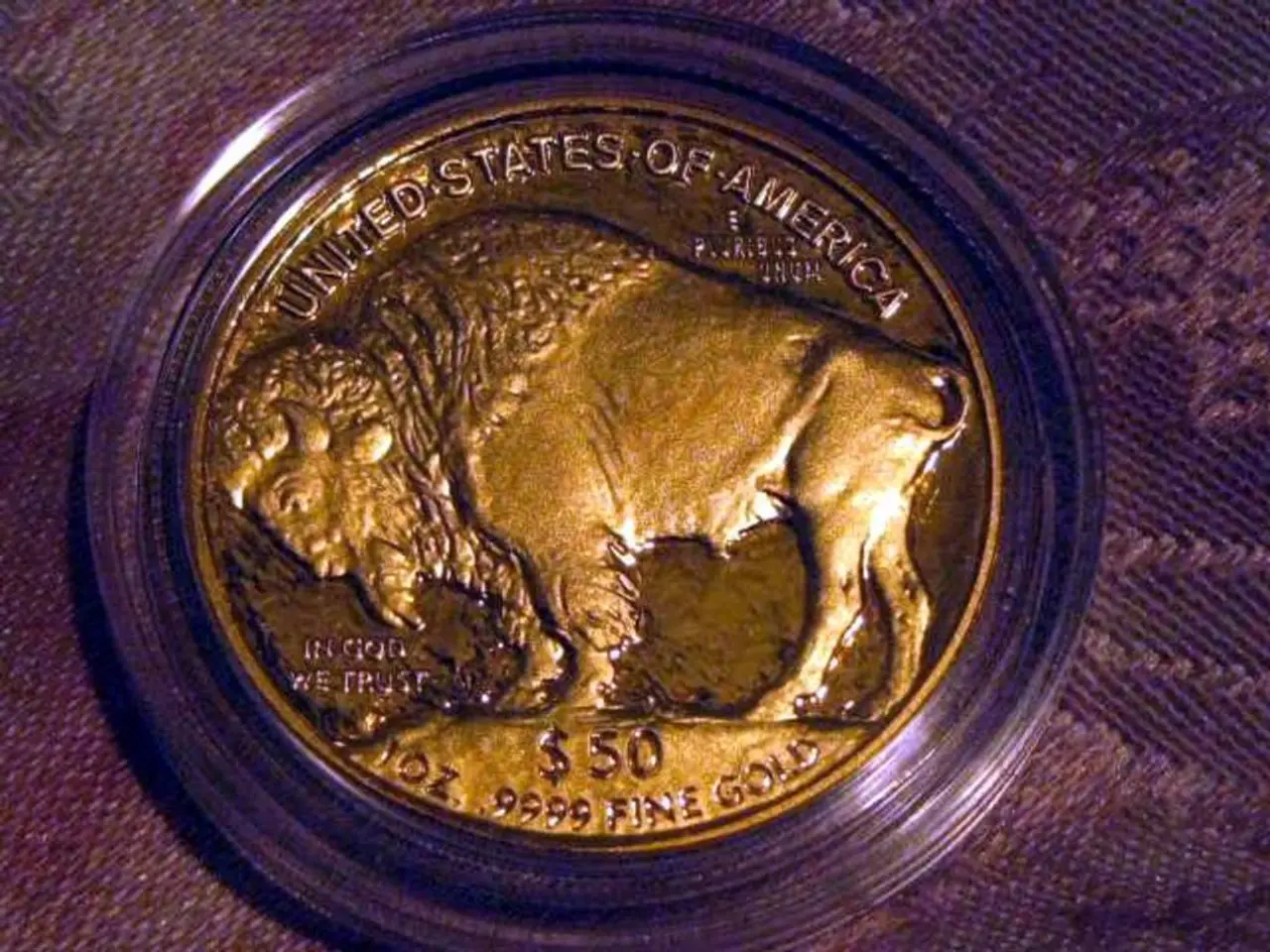Trump's Tariffs Threaten Fed's Economy Stability
U.S. President Trump's Trade Policies Cast a Long Shadow over Federal Reserve Decisions - U.S. President Trump's Trade Policies Cast a Shadow over the Federal Reserve Decisions
In the middle of the Federal Reserve's meeting, the spotlight is squarely on President Donald Trump's tariffs and their consequences for the U.S. economy. Amid efforts to maintain low inflation and a stable labor market, the ever-present tariffs threat presents an ongoing challenge. Here's a shake-down of the tension brewing between the Federal Reserve and the man at the helm.
Powell: Inflation and Growth Slowdown Inevitable
Fed Chair Jerome Powell foresees clear consequences from Trump's tariffs: prices will rise, and economic growth will take a hit. While Trump touts that consumers will feel no price increase due to the tariffs, Powell strongly disagrees: "Everyone I know predicts a significant increase in inflation...someone has to pay for them," he stated, cautioning consumers to brace for higher living costs.
Tariffs in the Fed's Crosshairs
Powell further explained that the full impact of tariffs will hinge on their magnitude. Given the uncertainty around potential tariff levels, expectations for higher tariffs are likely to push prices up and weigh on growth.
Unsurprisingly, this stance has set the Federal Reserve on a collision course with the President, as the Fed has no intention of succumbing to Trump's demands for immediate, easy credit. Instead, they've kept the interest rate steady, despite Trump's persistent pressure, at a high level ranging from 4.25 to 4.5 percent.
The Interest Rate Stalemate
These rate decisions reflect the central bank's primary tool for pursuing its objectives: limiting inflation and maintaining a healthy labor market. The interest rate dictates the rate at which commercial banks can borrow from the central bank, impacting mortgage, auto loan, and other lending rates for consumers and businesses.
Bracing for Lower Growth and Higher Inflation
In light of ongoing tariff challenges, the Fed has revised its 2023 growth rate outlook downward to 1.4 percent. They also project a higher inflation rate of 3.0 percent instead of the previous 2.7 percent.
Trump's Persistent Plea for Lower Interest Rates
Legal independence is the Fed's guarantee, but that doesn't deter Trump from repeatedly calling for lower interest rates to boost the economy. To escalate his demand, Trump often berates Fed Chair Powell, dismissing him as a "fool" or "stupid" in public. Though the Fed perceives no urgent need for action concerning interest rate levels at the moment, Trump's insistence remains a persisting irritant.
From the start of his presidency, Trump has imposed or threatened high tariffs on goods from various countries, thus making imports expensive for Americans. As the debate over tariffs continues to unfold, the economic and political consequences remain uncertainty-laden.
- Donald Trump
- Federal Reserve
- Tariffs
- Jerome Powell
- Inflation
- Central Bank
- U.S. Economy
- United States
- Labor Market
- Federal Reserve System
- Republican
- Interest Rate
- The ongoing challenge for the Federal Reserve, as it aims to maintain a stable labor market and low inflation, is President Donald Trump's tariffs, which threaten to escalate inflation and slow economic growth.
- Fed Chair Jerome Powell, in contrast to President Trump's assertions, predicts a significant increase in inflation due to the tariffs, cautioning consumers to prepare for higher living costs.
- Despite President Trump's persistent pressure, the Federal Reserve, in pursuit of its objectives, has kept the interest rate steady, reflecting its primary tool for limiting inflation and maintaining a healthy labor market.





